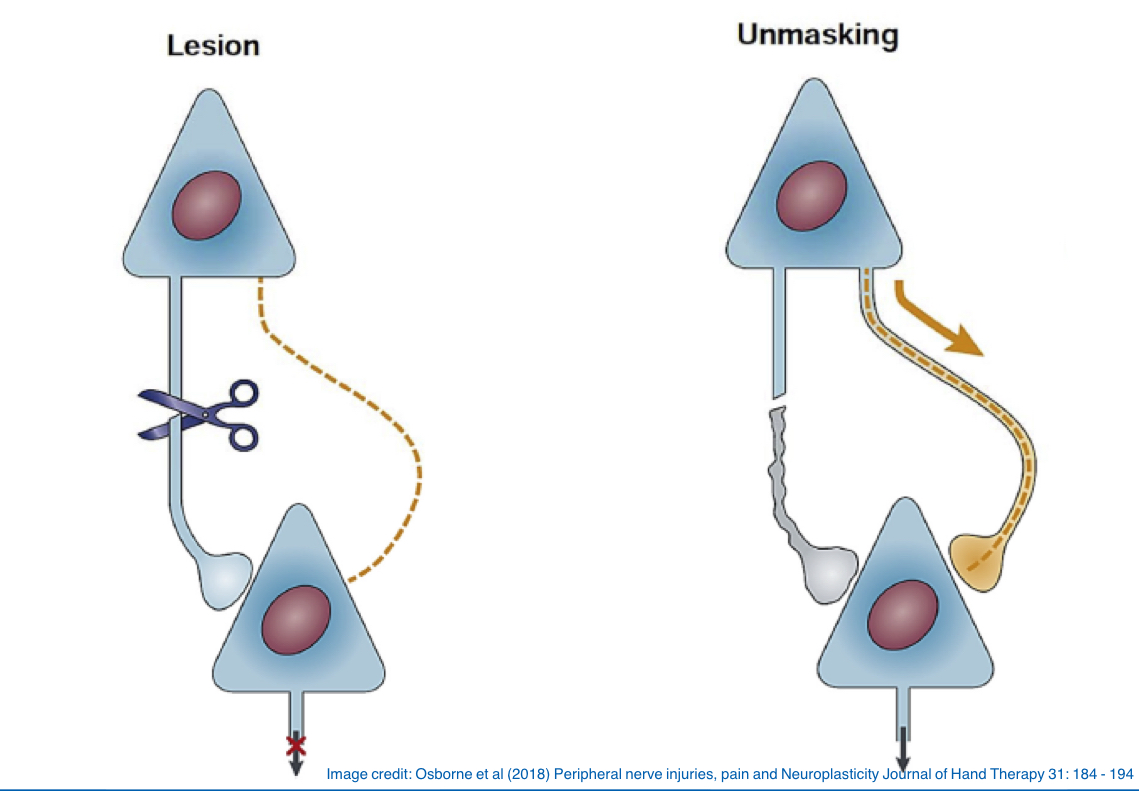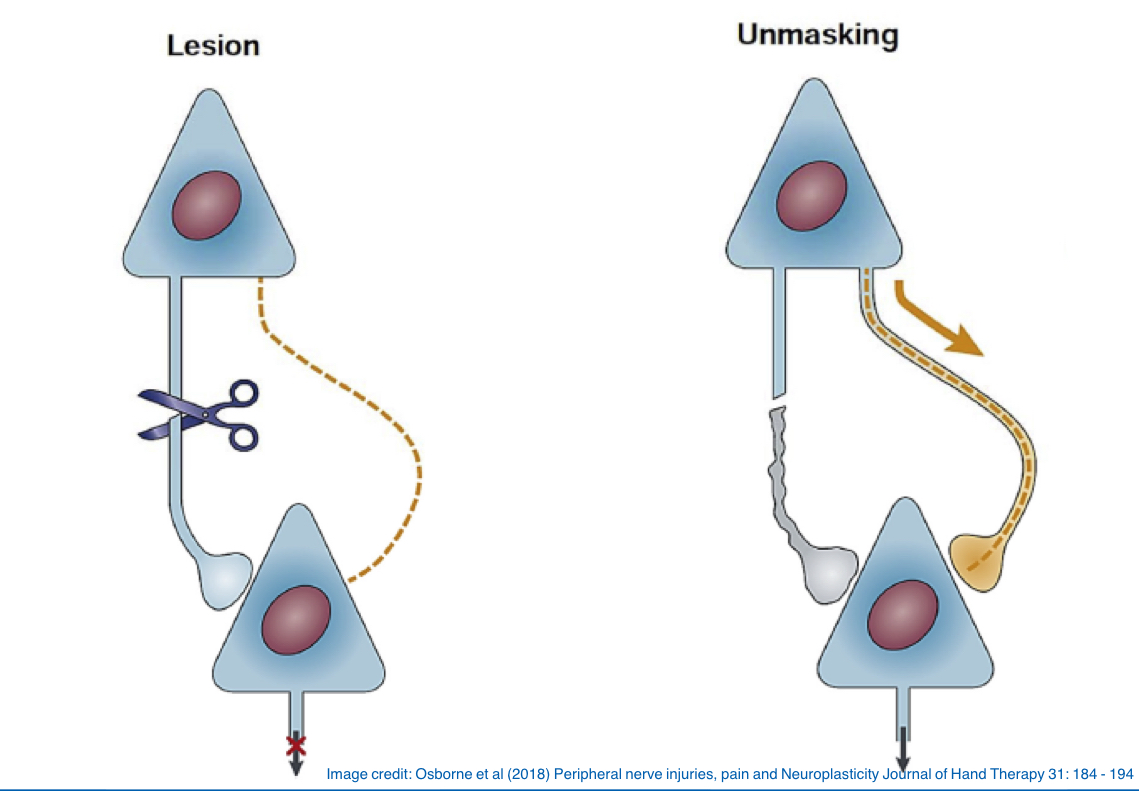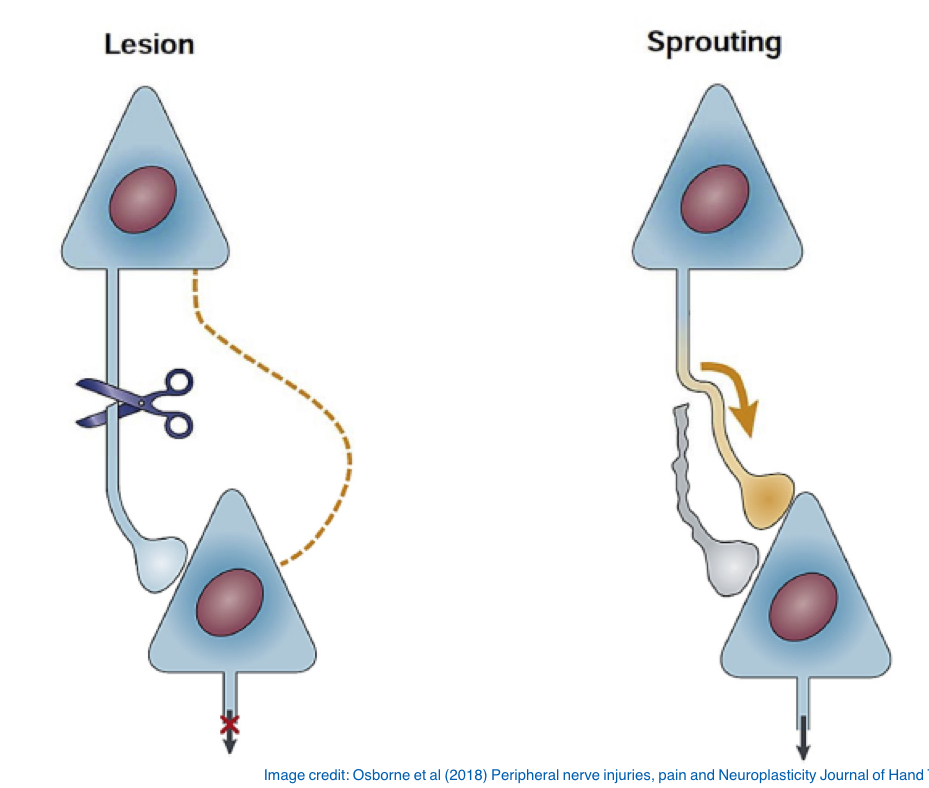Neuroplasticity L2
1/25
There's no tags or description
Looks like no tags are added yet.
Name | Mastery | Learn | Test | Matching | Spaced |
|---|
No study sessions yet.
26 Terms
Bach-y-Rita, 1980 - Definition of Neuroplasticity
Neuroplasticity refers to the adaptive capacity of the central nervous system, that is, the ability to modify its own structural organisation and funcitoning
Nudo 2006 - Definition of Neuroplasticity
The capability of the cerebral cortex to alter its functional organisation as a result of experience
Examples of neuroplasticity in action
Chronic Experience
Braille
Musicians
Athletes
Taxi Drivers
Interpretors
Bilinguals
Rehabilitation
learning to walk again after stroke
Mechanisms of Recovery with neuroplasticity
Altering structure
Altering Chemicals
Altering Function
3 Elements of Altering Structure
Unmasking
Sprouting
Vicariation of Function
Unmasking/The Redundacy Theory
Several synapses may mediate the same function in the brain, and some may be very active while others are redundant or ‘silent’
Unmasking is the phenomenon whereby silent synapses are facilitated to become the primary synapses of the damaged areas of the brain
Success depends on denervation supersensitivity, learning dependent synaptogenesis and long term potentiation

Sprouting and its 2 types
Collateral Sprouting
Regenerative Sprouting
Both act as a rewiring mechanism to allow lost function to be regained
It begins within 4-5 days of injury
Collateral sprouting seems more effective than regenerative, however without neurotransmitter influences leading to long term potentiation, a new pathway may not be established
Collateral Sprouting
The growth of sprouts from undamaged axons to form a connection with the damaged tissue

Regenerative Sprouting
The attempt of damaged axons to re-establish connection with the damaged tissue

Collateral vs Regenerative Sprouting
Collateral sprouting seems more effective than regenerative, however without neurotransmitter influences leading to long term potentiation, a new pathway may not be established
Vicariation of Function
How other cortical or subcortical structures, adjacent or remote from damaged area, are thought to take over or assume function of the damaged area
These areas may not have been directly involved with those functions before the injury
Mechanism of Recovery with altering chemicals
Neurotransmitter regulation
Denervation supersensitivity
Neurotransmitter regulation
Neurotransmitters
Neuroplasticity depends on a balance of excitatory, inhibitory and modulatory signals. GABA prevents overactivity, while glutamate via NMDA receptors is crucial for long term potentiation and learning. BDNF acts as a brain fertiliser to support synapse growth and survival. Other neurotransmitters also fine tune plasticity
Environment
Plasticity is also shaped by environment as enriched experiences like learning, excercise and social activity upregulate growth factors, signalling pathways and epigenetic changes, while downregulating processes limiting plasticity
Together neurotransmitters and environment enhance brain repair and protects against aging and disease.
Key neurotransmitters + factors involved in up-regulation
Experiences like learning, excercise and complex environments increase the release of the following:
Growth factors like IGF-I and BDNF
Signalling molecules like PKA, CREB, intracellular kinase
Epigenetic modifications like histone acetylation which opens DNA for gene transcription
Synaptic receptors like NMDA
More NT release - eg Glutamate, serotonin, dopamine
Neuronal adhesion molecules help stabilise new connections
Key NTs and factors in down-regulation
DNA methylation - gene silencing
Too much inhibition or excitation
Extracellular matrix components, which limit plasticity if overexpressed
Beta - amyloid, which is toxic in Alzheimer’s, and linked to impaired plasticity
The effects of up regulation dominance
enhanced plasticity
Faster brain development in children
Brain repair after injury
Rescue of intellectual disability phenotypes (improve function of the intellectually disabled)
Improved brain health during aging
Denervation Supersensitivity
As a result of partial denervation of neurons, post synaptic neurons can become more responsive to the neurotransmitters of the remaining affects, which may have positive or negative effects.
It increases existing synapses effectiveness and allows recovery to occur
The 4 Key Factors for the recovery of function
LDS, LTP, SI, AMN
Later-day saints, like to play, super interesting, amoral men nowadays
Learning Dependant Synaptogenisis
Long Term Potentiation
Sensory Intergration
Avoidance of Maladaptive Neuroplasticity
Learning Dependent Synaptogenesis
The formation of new synapses through an increase in dendritic branching and spine density, no.of synapses per neuron, and no.of synapses with synaptic boutons.
this can only occur once the axon has reached its destination and is therefore dependent on sprouting and denervation supersensitivity
Hebb’s Rule
“Learning and memory are based on modifications of synaptic strength among neurons that are simultaneously active, due to task repetition”

Long Term Potentiation
A persistent strengthening of synapses based on recent patterns of behaviour